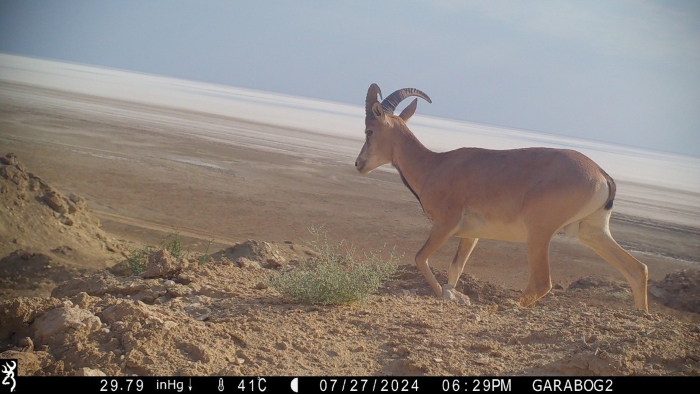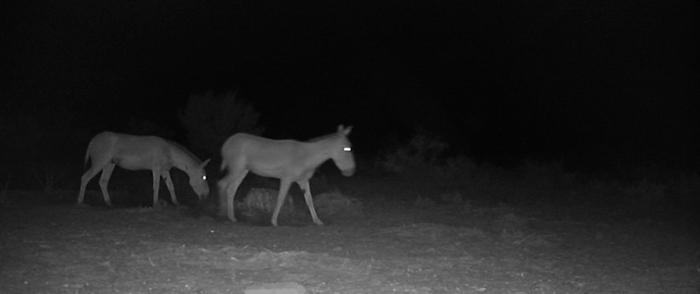Shirin Karryeva, Technical Advisor to the Conservation X Labs project
The Third Meeting of Range States to the CMS Central Asian Mammals Initiative (CAMI) took place in Tashkent (Uzbekistan) from 24 to 26 June 2025. The Central Asian Mammal Initiative was established in 2014 at the 11th meeting of the Conference of the Parties to the CMS to provide a common strategic framework for the conservation of the CMS-listed mammals and their habitats in the wider Central Asian region.
The meeting in Tashkent was attended by representatives of CAMI range states from Bhutan, India, Kazakhstan, China, Kyrgyzstan, Mongolia, Nepal, Pakistan, Tajikistan, Turkmenistan, and Uzbekistan, as well as international organizations, partners, and the CMS Secretariat. Turkmenistan was represented at this meeting by representatives of the Ministry of Environmental Protection, the National Institute of Deserts, Flora and Fauna, and experts from the Conservation X Labs project.
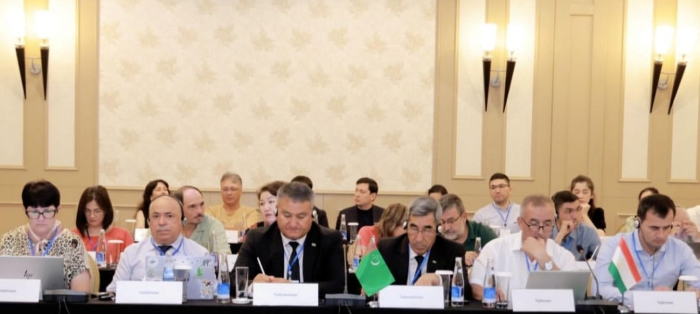
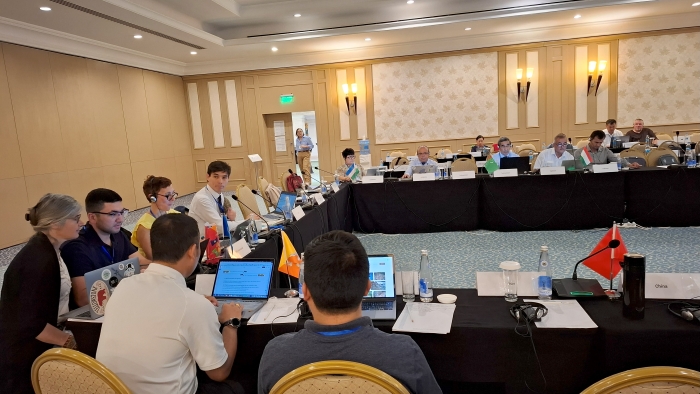
Since CAMI’s inception, its Work Programme has been updated every six years. At the Third Meeting of CAMI Range States, the CMS Secretariat presented a Report on the Implementation of the previous Work Programme for 2019-2025, and a new CAMI Work Programme for 2026-2032 was developed.
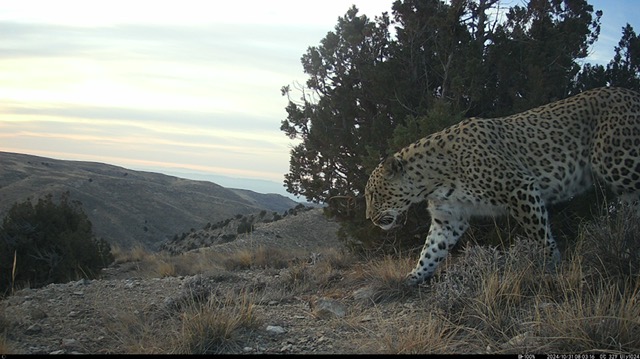
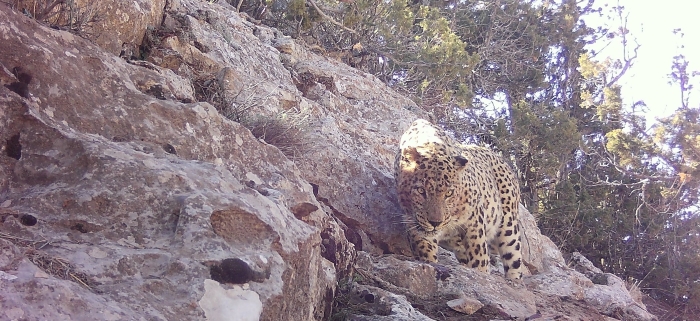
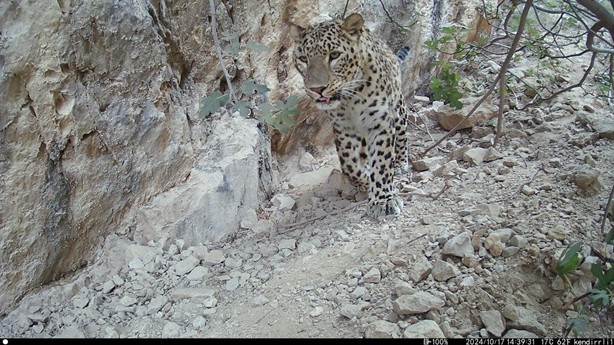
Persian Leopard on Greater Balkan © Team Bars Turkmenistan
Out of the 15 animal species on the CAMI list, the following species inhabit Turkmenistan: Urial, Goitered Gazelle, Kulan, Bukhara Deer, Persian Leopard, Manul, and Eurasian Lynx (the latter two species were proposed for inclusion in the CAMI list at the 14th Conference of the Parties in 2024). In addition to the CAMI Work Programme, Turkmenistan also participates in the implementation of Work Plans for individual species such as: Bukhara Deer, Kulan, Saiga Antelope, and Persian Leopard.
In the new CAMI Work Programme for 2026-2032, the CMS Secretariat proposed an approach based on Transboundary Priority Conservation Areas (TPCA), which are of great importance for the conservation of CAMI species. For Turkmenistan, these are the following three TPCAs: “Western and Southern Ustyurt,” “Kopetdag,” and “Koytendag/Kugitang.”
For the Western and Southern Ustyurt Transboundary Priority Conservation Area (jointly with Kazakhstan and Uzbekistan), several activities were proposed for implementation, including for the Ustyurt Plateau, which is currently not part of the country’s protected areas network. As is known, in 2024, Turkmenistan signed a Memorandum of Cooperation on Wildlife Conservation on the Ustyurt Plateau with Kazakhstan and Uzbekistan, and there is an urgent need to implement its Roadmap. Thus, within the framework of the National Forest Program in Turkmenistan, a new state nature reserve is planned to be created on the Balkan mountain range, including a cluster on the Ustyurt Plateau/Garabogazgol, to protect Urial, Goitered Gazelle, Bezoar Goat, Persian Leopard, Manul, and other “Red Book” (endangered) animal species. Within the transboundary project Conservation X Labs “Key Corridors for Felines in Central Asia,” activities for monitoring and protecting the Persian Leopard in Kazakhstan and Turkmenistan have been carried out since 2023.
The Persian Leopard is a key species for healthy ecosystems in Turkmenistan and the region. Confirmation of the presence of leopards in the Kopetdag, Badhyz, and Syunt-Hasardag State Nature Reserves, as well as on the Balkan mountain range, Garabogazgol, and the Ustyurt Plateau, indicates that Turkmenistan is part of an important leopard migration corridor in Central Asia, which in some places may be affected by the impending consequences of climate change.
The Saiga Antelope is also one of the species on the CAMI list and a “Red Book” species in Turkmenistan, which used to migrate during the harsh winter period. However, due to a decline in its population in Kazakhstan, as well as the establishment of engineering and technical structures in the border areas in northern Turkmenistan, the Saiga Antelope and other mammal species are unable to migrate from neighboring countries to Turkmenistan.
Long-term monitoring programs are needed to track population trends, migration corridors, and disease outbreaks among wild animals. These efforts contribute to understanding the interconnectedness of landscapes and the negative impact of engineering and technical structures, roads, and other infrastructure on wild animals. Transboundary data exchange and coordinated scientific research are conducted by Turkmen specialists jointly with Kazakhstan (regarding the Persian Leopard) and with Uzbekistan (regarding Kulan, Goitered Gazelle, and Urial).
For the Kopetdag Transboundary Priority Conservation Area (jointly with Iran), which is of great importance for the conservation of the Persian Leopard, Kulan, Urial, Goitered Gazelle, and Manul, a number of activities for the protection and monitoring of these species were identified. Thus, in Turkmenistan, inspectors from state protected natural areas (Kopetdag, Syunt-Hasardag, Badhyz) and the Environmental Protection Department of the Balkan velayat use camera traps for wildlife monitoring, as well as SMART patrolling to improve patrols. A new approach is also being introduced that will, to some extent, help reduce human-leopard conflict (e.g., Foxlights repellents). A Working Group on the Persian Leopard, a branch of the Cat Specialist Group of the International Union for Conservation of Nature (IUCN SSC), has also been officially established. The group has a website and a platform for disseminating information about conservation activities and outcomes in the region.
For the Koytendag/Kugitang Transboundary Priority Conservation Area (jointly with Uzbekistan), which is of great importance for the conservation of Urial and Eurasian Lynx, both on the CAMI list, activities for the protection and monitoring of these species were identified, along with the continuation of SMART patrolling in the Koytendag and Surkhan Reserves. Work will continue on preparing a transboundary nomination for “Kugitang Mountain Ecosystem” for submission to the UNESCO World Heritage Committee.
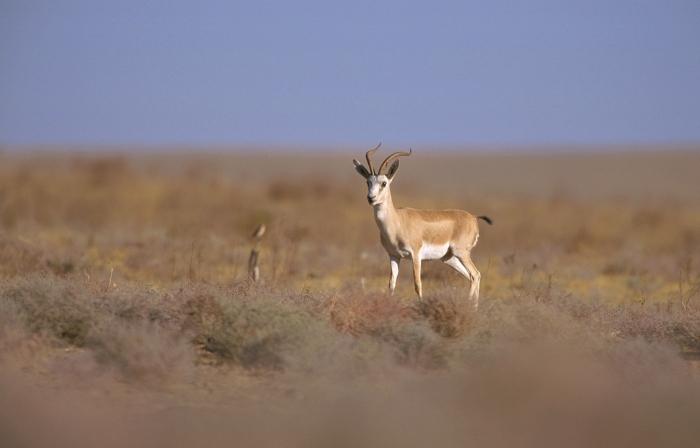
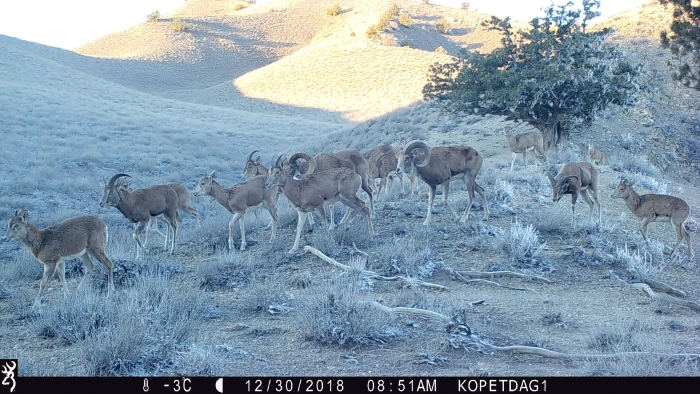
The Work Programme for 2026-2032 recommended working with relevant national agencies to gain an understanding of corridors and barriers hindering landscape connectivity, such as engineering and technical structures, roads, and other infrastructure, and their impact on wild animals, and to develop mitigation options, including for the protection of migration corridors.
CAMI Range States will need to integrate the updated CAMI Work Programme for 2026-2032 into national policies: ensure the official inclusion of migratory species conservation activities in national biodiversity conservation strategies, environmental laws, land-use plans, and infrastructure policies, and ensure intersectoral consultations on their implementation. At the Third Meeting of CAMI Range States, a new chairman was elected in the person of Uzbekistan and Turkmenistan as deputy chairman for the next intersessional period. ///nCa, 1 July 2025


